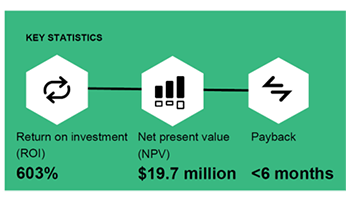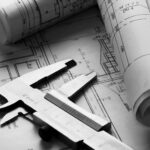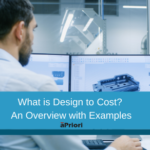
Demand for smarter machines and technologies is an ever-pressing burden for engineers in all sectors. With an increased need for innovation to meet the demand comes shorter product life cycles – requiring products to maximize revenue before the next generation debuts.
This has been especially challenging for those industries that have relatively low product volumes with high part counts. As if meeting these marketplace demands and innovating at warp speed wasn’t enough to truly beat out the competition (and capture a large revenue share), it must also be done at a competitive price point.
Surface-Level Costing Could Compromise Revenue and Time to Market
Where technology and innovation have revolutionized our products, most manufacturers are still using tried and traditional costing models – targeting machines with the most expensive components or components with long lead time – in an attempt to identify savings as fast as possible. In the grand scheme, this is costing at the tip of the iceberg, leaving the bulk of reductions invisible to the manufacturing team at large.
Below the surface of the traditional cost model iceberg lurks major issues that may not become apparent until late in the production process. This causes less competitive products, running first-generation machines at a loss, or compromising time to market.
How Can You Modernize Your Manufacturing Company’s Costing Strategies?
Digital manufacturing simulation provides on-demand, valuable insights for the entire product definition. Cost and manufacturability issues are identified early and presented to design teams for consideration. Through automation and data analytics, the best opportunities for cost and ECO reduction can be presented to program managers, engineering managers, and anyone else focused on cost or time to market. For the design team, this guidance supports design standards and good DFM practice.
At scale, this strategy will not only identify a few outliers but provides the relative information surrounding those outliers to bring the exponential value of component cost reductions into focus.
Increase Manufacturing Cost Reduction Through Design for Manufacturability
Traditional targets for value engineering searches for manufacturing cost reduction through expensive design choices. These reductions—if caught early in the design process—are an excellent way to keep costs low. Often, these types of reductions carry the hidden cost of time with late-stage ECOs clogging up your road to revenue.
However, integrating a digital simulation software that ranks and stores design for manufacturability (DFM) in your digital factory allows you to create a PLM culture that integrates strong DFM components into more products, eliminating costs from the start. This leads to greater savings over time.
Should Cost vs. Quoted Cost or Actual Cost
Plotting quoted costs of components allows you to identify cost outliers and focuses the team’s attention on the pieces that are most greatly affecting costing. This is fairly standard practice and has led to significant manufacturing cost reduction. But what if you plot out should cost and quoted cost on one chart? You still see outliers for standard cost reductions, but you see a bit more too. Now you see where quoted cost and should cost are out of sync.
When should cost is well below the actual cost, a strong partnership and open discourse with suppliers goes a long way. The opportunity for manufacturing cost reduction is significant and you have at hand the key insights that can make that conversation productive.
But what of the moments where should cost is well above the quoted cost? You may initially think you’re getting a really good price and leave it at that, but there’s something about those parts that is driving the cost down in the supply chain.
Two things may be at play: it could be the supplier’s desire to get your business, or it could be the supplier has a more efficient process. While the former is always a benefit, the latter creates an ah-ha moment where an OEM can seize the opportunity to expand supplier partnerships to more efficiently manufacture similar parts.
Cost Thousands of Components Faster and More Accurately
Let’s assume that in today’s manufacturing world, the average cost engineer is responsible for thousands of components. The market is under increasingly tight expectations around innovation and time to market. There simply isn’t enough time to uncover the full cost burden by traditional methods.
Automate and Integrate Your Costing Strategies
The cost engineer simply must look to automate and integrate with the existing PLM. The power of digital manufacturing simulation software to rank components for DFM, identify outliers in cost, design, and procurement, and report to each stakeholder in the business timely is a crucial technology.
Get a 6X ROI with aPriori
Don’t just take our word for it: read Forrester’s impact study.





